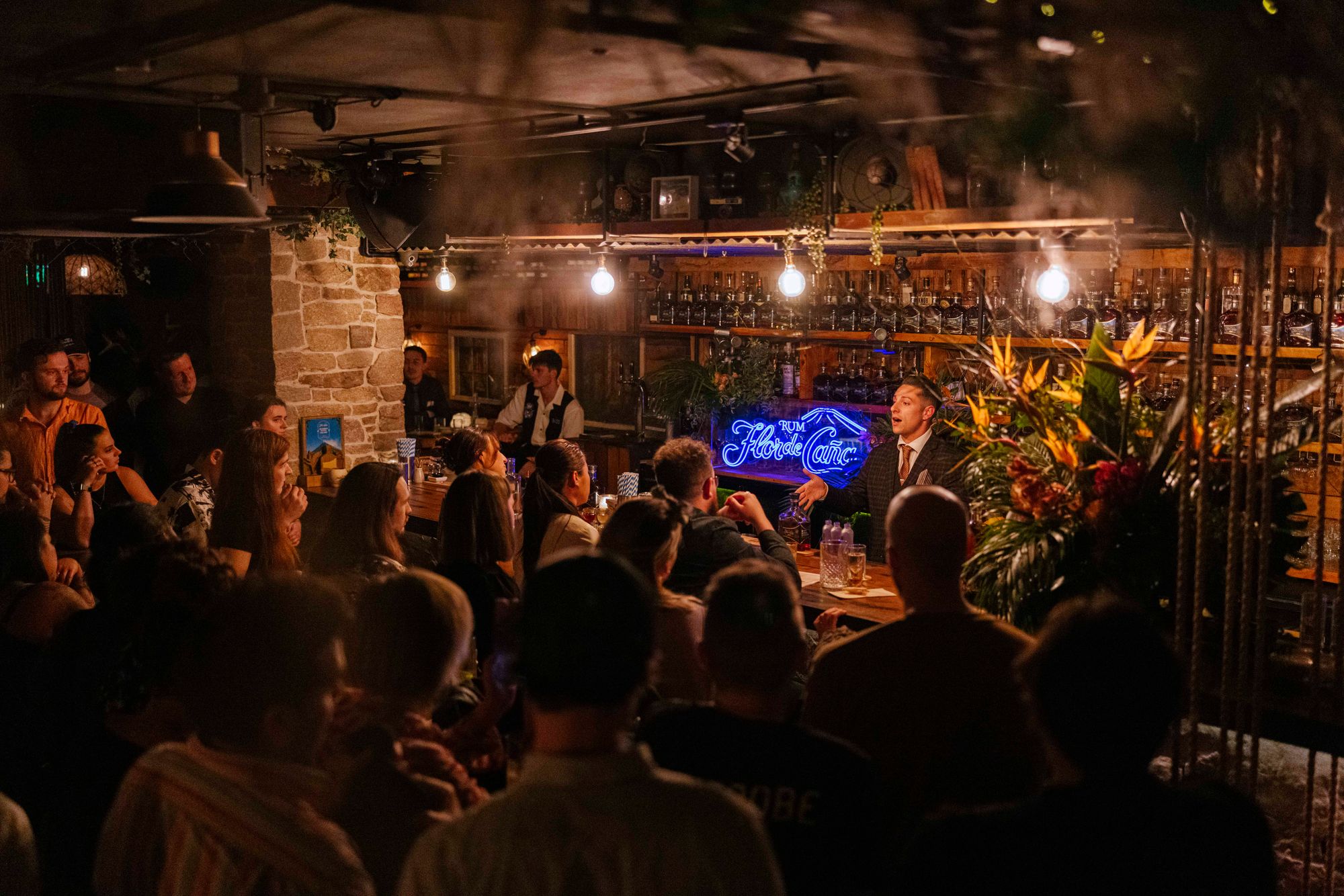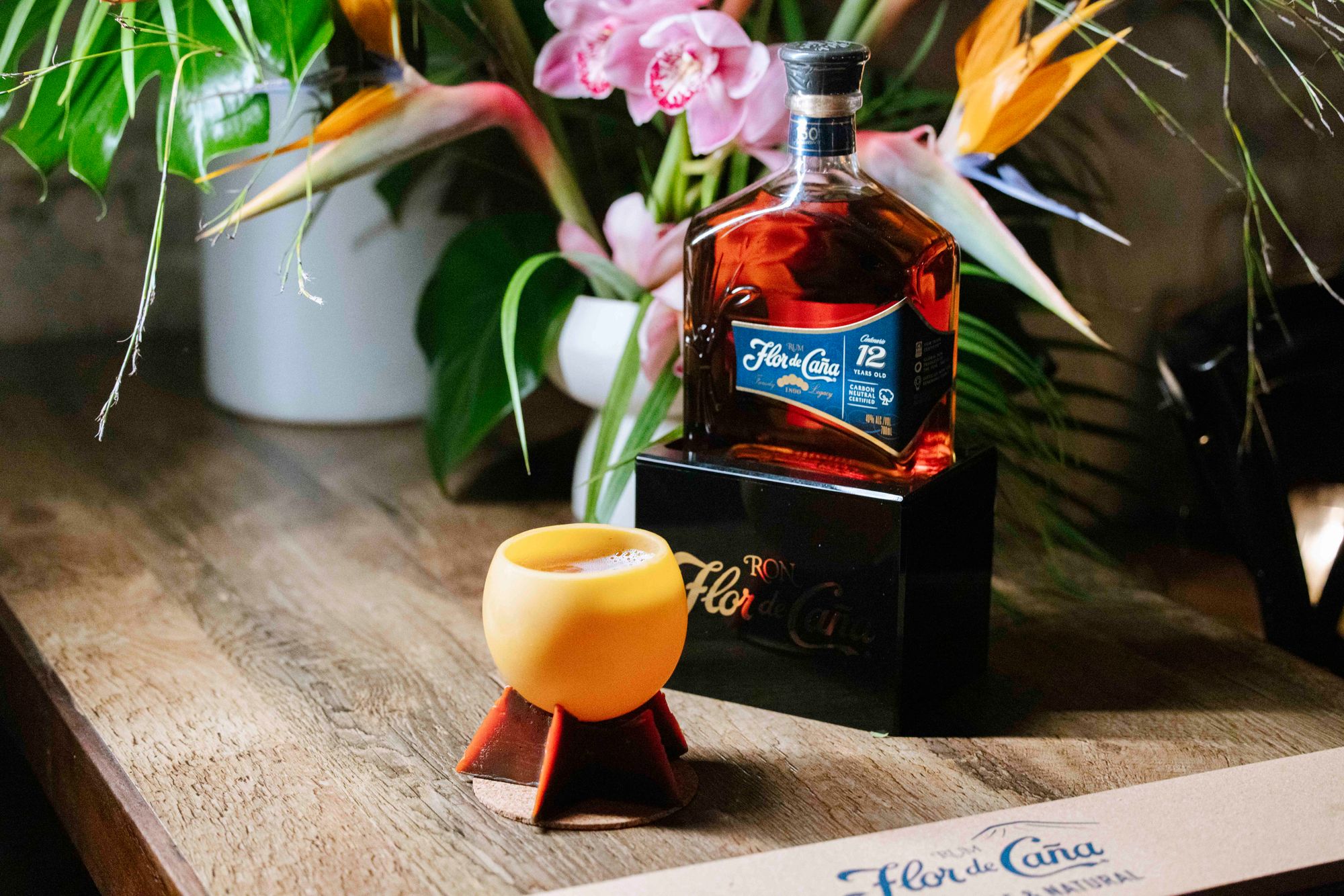Sustainability: it’s a topic that has been hard to avoid in the bar industry for the the better part of a decade now. I remember writing quite a bit about sustainability in bars back in 2016 — it was a time of Trash Tiki, of repurposing citrus husks for soap and realising just how much bloody plastic comes into each and every bar. Back then, it was novel to re-use and re-purpose otherwise wasted ingredients — and deliciousness often suffered.
Today, I find more and more bartenders have found new ways of taking what can be rather dry sustainable concepts and making them exciting and meaningful, but most importantly, delicious too — bartenders like Andrea Marseglia, who owns Teresa Bar in Napier in New Zealand, and took out the Australia and New Zealand final of the Flor de Caña Sustainable Cocktail Challenge back in September.
His win and his winning recipe demonstrates just how far the bar world has come not just in terms of sustainability — to hear him talk about these ideas is to hear someone who believes they ought to be part of everyone’s bar programs — but also in the level of professionalism it takes to come out on top in a competition like this. You just need to read about the lengths to which Andrea went to create this recipe — a drink which they sell in the bar, too — and you’ll see how bartending has become something more than just banging some tins about.
Andrea is off to the global finals in Nicaragua next year — I think he might be in with a chance.
Below, lightly edited and condensed for clarity, learn more about how Andrea went about producing this drink, and how he incorporates sustainable concepts into his daily work.

Boothby: In September, you won the Flor de Caña Sustainable Cocktail Challenge — congratulations. How did that feel?
Andrea Marseglia: It was really incredible. Being against such an incredible bunch of bartenders from Australia and New Zealand, it was a tough challenge for sure. The guys were quite young as well, so it was really good to see young bartenders coming up with some really great concepts. So it was a hard win, but it was a win. We’re pretty stoked with that.
A win is a win.
A win is a win.
What did you do for your drink? What was the challenge that you were tasked with and what did you do to win?
It was basically creating the most sustainable drinks that you can possibly create. I’ve really been trying to push New Zealand native ingredients, foraging, and seasonality at the bar. One of the most sustainable things that you can possibly do is going local. And so we broke down the word local into an acronym that stands for Land Of Change, Adapt And Learn. It’s understanding that sustainability is a really vast word and to change that mentality to a more sustainably minded mentality of making drinks, we need to change, then we need to adapt.
Once we’re adapted to this mentality, then it’s about learning and how can you create new ways of being more sustainable. That is not just within the waste and the produce, but it’s also about the understanding of sustainability in your workplace.
So the drink is Flor de Caña 12 and then a cocoa husk distillate which we made into a liqueur. We collaborated here with a local chocolaterie that of course has coca husks, which is the husk of the cocoa bean.

That gets thrown away during the chocolate making process?
Yes, it’s one of the most wasted byproducts in the world, especially for chocolate. And so we basically just vacuum distilled it to really extract that oiliness and that chocolate notes that really matches the For de Caña 12.
We also diluted down to about 20% with a cocoa husk tea and sweetened with a cocoa husk syrup. That’s a chocolate punch.
Then for some acidity, we had a single vineyard syrah verjuice. And being, of course, in Hawke’’s Bay, this is a lovely wine region, we collaborate with one of our super cool friends, who is a winemaker — we will be releasing also a vermouth with the same syrah. But basically another big byproduct of the wine industry in New Zealand is verjuice — the unripe grapes that get thrown away pre-harvest and during harvest. So we took it and we blended it to make a very sour verjuice but with a little touch of that skin contact to get a bit more tannin and a bit more complexity.
And as a sweetener, we made a dandelion root and a marshmallow root caramel. So rather than going and getting more ingredients, we wanted to source actually a sort of weed or in this case, they are considered weeds. Dandelion and marshmallow roots were actually used as one of the OG medicine back in the days. We also worked with a naturopath down here in Hawke’s Bay and talking to her she said that by charring and cold distracting those roots, you also extract a lot of gellan, that will bring viscosity. It also brings this incredible vanilla scent that marries well with the aging of the Flor de Caña.
Last but not least, we served everything in a beeswax cup. This beeswax cup has been sourced, locally from an incredible organisation called Horepa. It’s a local organisation that cares for, houses and employs only kids and adults with disabilities. So they have an incredible workshop where they create beeswax.
How much work went into this? It seems like there’s a lot of parts involved in it. What was the sort of time period? Or is this something you’ve been working on anyway at the bar and then it sort of goes on from there?
We’ve already been working quite a bit at the bar with our wine maker for the verjuice. In fact, we did around 250 bottles of it.
New Zealand is actually a pretty funny country. As Australia has incredible produce and fruits and veg all year round, thanks to Queensland, that pumps everything you want every day you want, here in New Zealand. It’s a bit of a different story because we go through a couple of citrusless months right about now for about a month and a half, and towards autumn and winter, so citrus becomes really hard to find and really expensive. So at the bar we make everything we can with the verjuice in terms of sour.
You’re looking forward to the global Final, it’s in Nicaragua. Have you ever been before?
No, I have not. So I’ve been looking at some, definitely some food and what’s happening there.
How are you approaching preparing for the global final? Because you obviously want to go there to win, right?
That’s the mentality. We’re going there to win. That is for sure.
I’m repeating a lot the speech and what we want to say, especially highlighting the sustainability, also the history of Flor de Cana — it’s to make yourself repeat it, in that uncomfortable situation of being in front of a mirror, explaining, repeating.
It’s almost like I’m doing my gardening jobs and repeating the speech while my neighbours look at me like, what the hell is he doing? I think it’s that daily routine that will help with what I want to achieve. It makes me, even when I go to present to the judges, as comfortable as possible.
How do you keep sustainability stuff being interesting and engaging, right? Cause some of it can be really, it’s a bit boring after a while.
An ethos that we have at the bar, is to create to imprint a memory. And even with the simplest ingredients, what we’re trying to look at is how to make it so special that it imprints a memory to the customer or imprints a memory to us in the way that we use it. Of course, it has to be delicious. Full stop.
You’re a curious guy. You obviously like to learn. What are you wanting to learn from your time in Nicaragua at the final?
It’s really understanding the whole sustainability part of For de Cana, and how they’re making it carbon neutral. I’m also definitely looking at the locals. I like to get lost sometimes in a place with locals. My Spanish is not the best, but I’m Italian — you put a couple of S’s at the end of the words, you kind of get away with it, you know.









